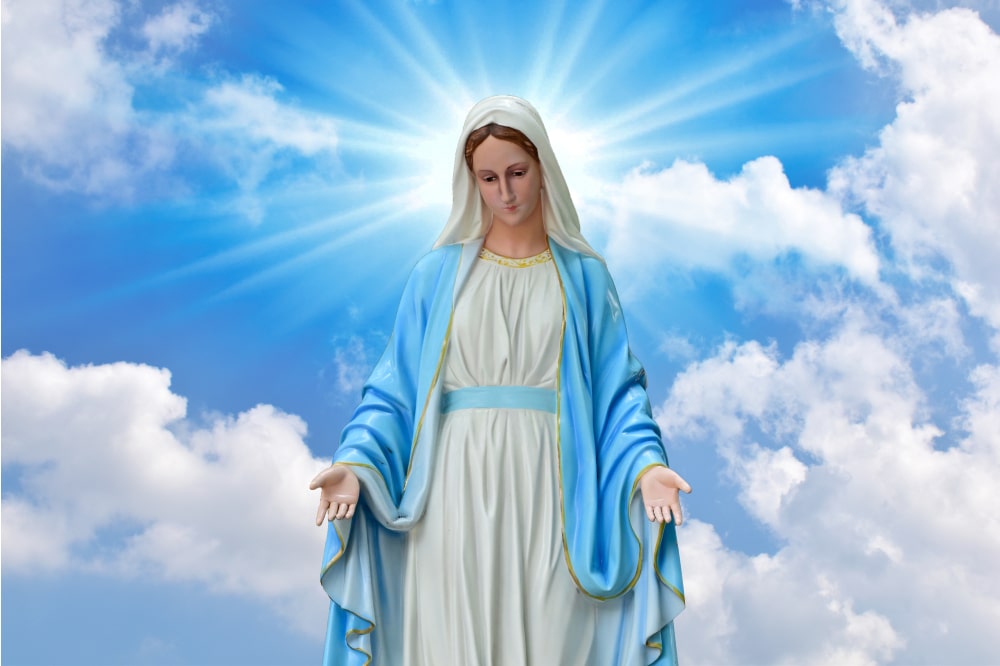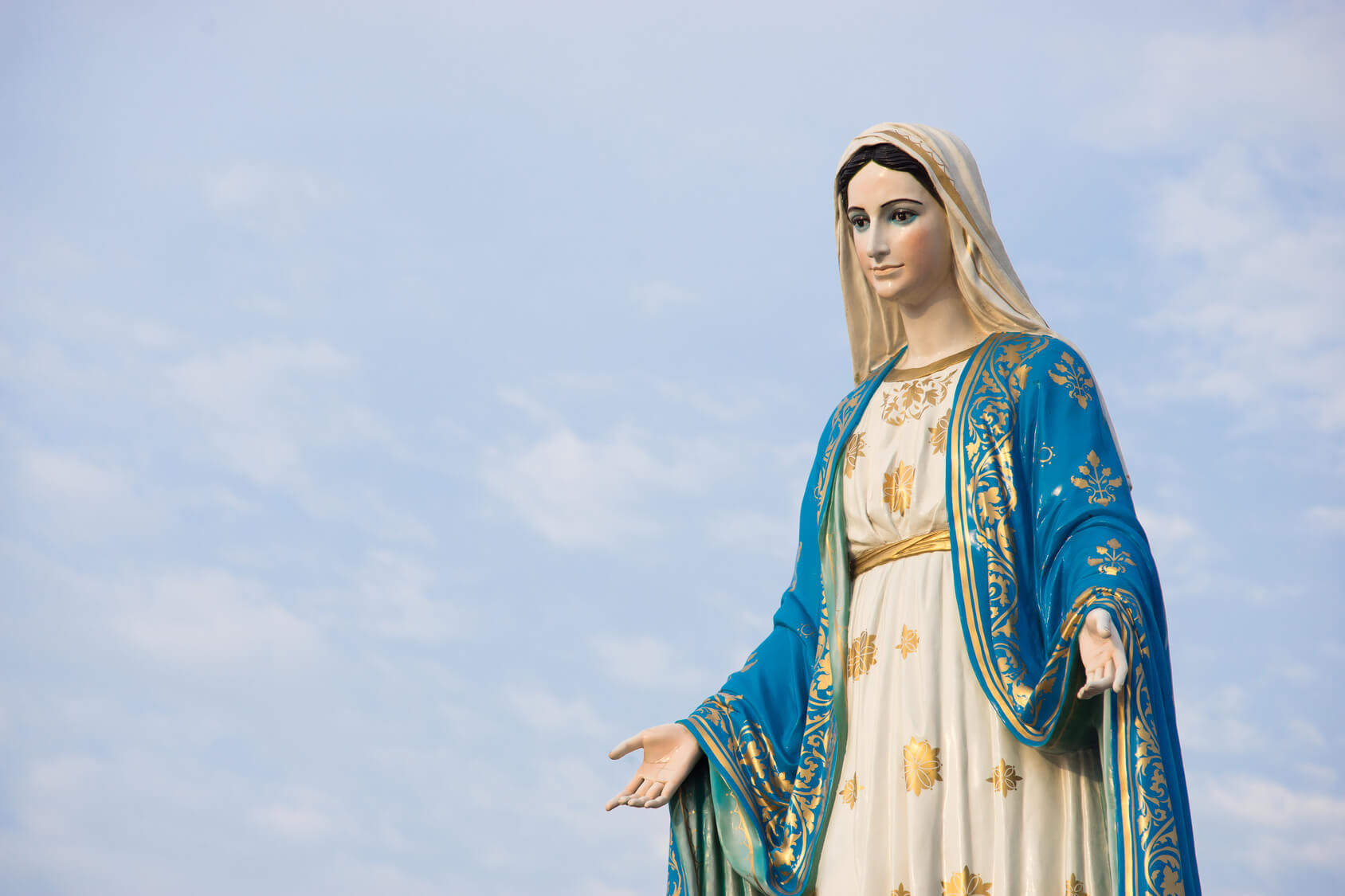For anyone who has ever found comfort or a moment of connection through the airwaves, the voice of a radio announcer can feel like a familiar friend. In Argentina, and indeed across Spanish-speaking communities, the name Maria Esther brings to mind a particular kind of warmth, a presence that has shaped the soundscape for many years. It is a story, too, that speaks of more than just a job; it tells of a deep connection to a medium that continues to touch people.
The experience of listening to radio, it is almost, holds a unique spot in our collective memory. Before screens became so common, the sound from a speaker brought news, stories, and music right into homes, creating a shared sense of time and place. This medium, in a way, let people feel close, even when miles apart, and the individuals who spoke into the microphone became part of daily life for many families.
As we consider the journey of these voices, we find that the story of "Maria Esther locutora de radio" is not just about one person. It represents a thread woven through the fabric of broadcasting history, highlighting individuals who poured their spirit into the work. We will look at some of these remarkable people, how they started, and the lasting mark they made on the world of sound, you know, across generations.
- Clara Spera Ginsburg
- Doctor Odyssey Tristan
- Claire Dutton In 1883
- Ellen Degeneres Lives Where
- Holly Madison Gets Married
Table of Contents
- Maria Esther Sánchez - A Radio Life
- What Made Her Voice So Special?
- Other Voices Named Maria Esther - A Broader Look
- How Did Radio Change Through Their Time?
- Is There a "First" Maria Esther Locutora de Radio?
- The Lasting Impact of Maria Esther Locutora de Radio
- Why Do These Stories Still Resonate?
Maria Esther Sánchez - A Radio Life
When people speak of a person who truly left a mark on Argentine radio, the name María Esther Sánchez often comes up. Her journey into this field started at a relatively young age, showing a connection to the sound world from early on. It was a path that, in some respects, felt almost destined, given her family background and the atmosphere she grew up around.
The Beginnings of Maria Esther Locutora de Radio
María Esther Sánchez began her professional life in radio when she was just seventeen years old. This was before she had even formally studied the art of speaking on air. Her initial experiences were with radio stations that helped shape her early skills. It seems that a natural gift for the work was present from the start, allowing her to step into a microphone's presence with a certain ease.
Her father, José Tresenza, played a significant part in her early exposure to the radio world. He was an actor, a person who performed for audiences, and he was part of the regular group of performers at Radio El Mundo. This station, you know, had a structure that mirrored broadcasting organizations in other parts of the globe, providing a setting for artistic expression and communication. So, María Esther, as a child, would walk through the halls of the Radio El Mundo studios with her father, getting a feel for the place where sounds were made and sent out.
- Do Meredith And Thorpe Get Married
- Bob Costas Pink
- Cynthia Erivo Alopecis
- Demi Lovato Christmas Tree
- How Old Is Jodie Sweetin Husband
This early exposure, really, helped plant the seeds for what would become a long and meaningful career. It was in these very halls that she began to pick up the rhythm of broadcasting, the way voices could carry feeling and information to people listening at home. Her initial steps into the profession, therefore, were guided by a kind of family tradition, a connection to the world of performance that ran in her blood.
Personal Details / Bio Data - María Esther Sánchez
| Known For | Argentine Radio Announcer (Locutora) |
| Early Career Start | Age 17, before formal studies |
| Family Connection | Daughter of José Tresenza (actor at Radio El Mundo) |
| Impact on Radio | Marked a significant period for Argentine radio |
| Distinguishing Feature | Known for her unmistakable laughter |
| Notable Mention | Discussed in context of 101 years of Argentine radio |
What Made Her Voice So Special?
What makes a voice stand out on the radio? For María Esther Sánchez, it was, apparently, more than just clear speaking. The text mentions her "unmistakable laughter," a quality that would have made her sound instantly recognizable to listeners. This kind of personal touch, a genuine expression that comes through the microphone, can create a bond with the audience that goes beyond just the words being spoken.
A voice that carries warmth and a sense of realness can make people feel like they are having a conversation with a friend, rather than just listening to a broadcast. This ability to connect, to make the listener feel seen and heard, is a quality that defines those who truly leave their mark in radio. It is, you know, a sort of magic that some individuals possess, allowing them to turn a simple transmission into a shared experience.
Her way of speaking, her tone, and the feeling she brought to her programs helped to define a period for Argentine radio. She was a person who, through her work, showed a deep commitment to the craft, and this dedication was felt by those who tuned in. The impact she had was not just about the information she shared, but about the human element she brought to every moment on air, which, arguably, made her programs very special.
Other Voices Named Maria Esther - A Broader Look
While María Esther Sánchez is a prominent figure in the story of Argentine radio, the name "Maria Esther" has, in fact, been associated with other significant voices in broadcasting, too. This shows that the name itself, perhaps, carries a certain resonance within the world of radio, or perhaps it is simply a common name for people who found their calling in this particular medium. We can look at a couple of other individuals who share this name and have also contributed to the sound waves.
Maria Esther Locutora de Radio from Spain
There is also a Maria Esther who was born in Gijon, Spain, in 1981. This individual has become known as a radio host and has also worked in television. She is recognized for her contributions to the Univision network, which means her voice has reached audiences across different regions. Her work, as a matter of fact, shows how broadcasting talent can span countries and connect with diverse groups of listeners, bringing different cultures together through sound.
Her career reflects the changing nature of media, where hosts often work across both radio and television. This kind of adaptability, you know, is something that many people in the communication fields need to have these days. Her presence on air, therefore, adds another layer to the story of "Maria Esther locutora de radio," showing a more contemporary example of someone making their way in the industry.
Maria Esther Locutora de Radio - Vignola's Contribution
Another voice of note is María Esther Vignola, sometimes known by the nickname "Beba." She was a popular and recognized voice in radio, joining various programs and contributing to the sound of her time. One instance mentioned her participation as a speaker in a series with Ricardo Passano, a person who also had a presence in the media world. Her contributions, in a way, highlight the collaborative nature of radio, where different talents come together to create programs for the audience.
Her work took place in places like the Belgrano neighborhood, suggesting a connection to specific communities and local broadcasting scenes. The idea that she was a "popular" voice means that many people enjoyed listening to her, finding something appealing in her style or her way of presenting information. This, you know, speaks to the power of individual personalities in shaping the listening experience for many years.
How Did Radio Change Through Their Time?
When we think about the careers of these individuals, it makes us consider how radio itself has changed over the years. From the early days, when stations like Radio El Mundo mirrored the structure of international broadcasters, to the current landscape where web frequencies and digital platforms play a role, the medium has gone through many transformations. The ability of a radio host to adapt to these shifts, to continue to connect with listeners regardless of the technology, is a sign of true skill.
In the past, people would gather around a receiver, listening to programs that were, essentially, the only source of instant news and entertainment for many. Today, we can access radio through our phones, through websites, and through various applications. Yet, the core appeal of a human voice speaking directly to you, creating a sense of intimacy, remains. So, the question is, how did these "Maria Esther locutora de radio" figures manage to keep that connection alive through different eras?
It seems that the fundamental elements of good broadcasting, such as a clear voice, a warm manner, and a genuine interest in the audience, have stayed the same. While the ways we receive the sound have changed, the human desire for stories, for music, and for companionship from the airwaves has not. This, you know, suggests that the enduring appeal of radio rests on these very human connections, which individuals like the Maria Esthers helped to build.
Is There a "First" Maria Esther Locutora de Radio?
The idea of who was the "first" radio announcer is a topic that often comes up, especially when looking back at the early days of broadcasting. In Latin America, for example, Zoila Casas Rodríguez from Cuba is seen as a key figure, having transmitted programs from as early as 1922. This shows how quickly the medium took hold in different parts of the world, and how women were present in these pioneering roles from the very beginning.
While the text mentions a debate about whether she or someone else was truly the first, it highlights that the early history of radio is filled with individuals who, in some respects, broke new ground. These were people who stepped into a new space, a new way of communicating, and helped to define what it meant to be a voice on the air. So, while we might not pinpoint a single "first Maria Esther," we can appreciate the spirit of those early broadcasters who paved the way.
The stories of these early voices, you know, remind us that every field has its beginnings, its trailblazers who, basically, shaped the path for those who came after. It is a testament to their foresight and courage that they saw the potential in this new technology and used it to connect with people in a way that had never been done before. This foundation, therefore, allowed subsequent generations of broadcasters, including the Maria Esthers, to build upon a rich tradition.
The Lasting Impact of Maria Esther Locutora de Radio
The influence of a radio announcer, especially one who spends many years on the air, can reach far beyond the microphone. For people like María Esther Sánchez, their voices became a part of the everyday sound of a nation. They were there during moments of joy, during times of challenge, and during the quiet hours when people just needed a companion. This kind of presence, you know, creates a bond that can last a lifetime for many listeners.
The ability to evoke feeling, to bring stories to life, and to create an atmosphere through sound is a skill that few truly master. When a person hears a voice that they connect with, it can feel like a personal conversation, even though it is being broadcast to many. This feeling of intimacy, of being spoken to directly, is a key reason why certain broadcasters are remembered and cherished long after they leave the airwaves.
The stories of these individuals, too, are woven into the larger story of a country's culture. They reflect the times they lived in, the music that was popular, and the way people communicated. So, when we talk about a "Maria Esther locutora de radio," we are not just talking about a job; we are talking about a person who contributed to the very fabric of how a society heard itself and the world around it.
The Legacy of Maria Esther Locutora de Radio
The legacy of a person like María Esther Sánchez, or any of the Maria Esthers who graced the airwaves, is seen in the way their work continues to be spoken about. When people recall the "golden era" of radio, it is often the voices of these individuals that come to mind. Their professionalism, their unique qualities like an unmistakable laugh, and their ability to connect with the audience helped to define what good radio could be.
Even today, when we consider the 101 years of Argentine radio, it is the contributions of people like María Esther Sánchez that help us understand why this medium continues to hold a special place. The feeling that radio can evoke, the way it can move us, is a direct result of the human touch brought by these broadcasters. Their influence, therefore, extends beyond their time on air, shaping the expectations and experiences of listeners for generations to come.
This enduring impact is not just about nostalgia; it is about the lasting power of human connection through sound. The way a voice can carry emotion, can convey sincerity, and can make people feel understood is a timeless quality. And so, the legacy of "Maria Esther locutora de radio" is a reminder that some forms of communication, in a way, never truly fade, but rather continue to resonate in the hearts and minds of those who listened.
Why Do These Stories Still Resonate?
Why do we still talk about these figures from radio's past? Perhaps it is because their stories speak to something deeper than just broadcasting. They speak to the human desire for connection, for shared experiences, and for voices that feel like they belong to us. The way they touched lives, through the simple act of speaking into a microphone, shows how powerful even seemingly small acts of communication can be.
These stories, you know, also remind us of a time when radio was, perhaps, even more central to daily life than it is now. For many, it was the primary source of entertainment, news, and cultural happenings. The voices on air became trusted companions, guiding listeners through their days. So, when we hear about a "Maria Esther locutora de radio," we are, in a way, reconnecting with a piece of our collective past, a moment when sound held a different kind of meaning.
Moreover, the personal journeys of these broadcasters, the challenges they faced, and the passion they brought to their work, offer lessons that go beyond their profession. They tell us about dedication, about the power of a unique personality, and about the ability to leave a lasting mark through one's chosen path. This is, you know, why these narratives continue to hold a certain appeal, reminding us of the human spirit that shapes all forms of communication.
- What Happened To Todd Milsap
- Brad Pitts Friend
- Micah Parsons Kids
- Holly Madison Gets Married
- Tyrese Haliburton Mother


